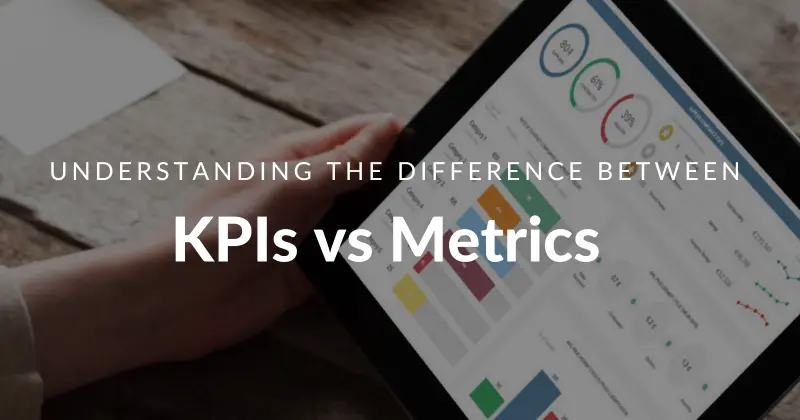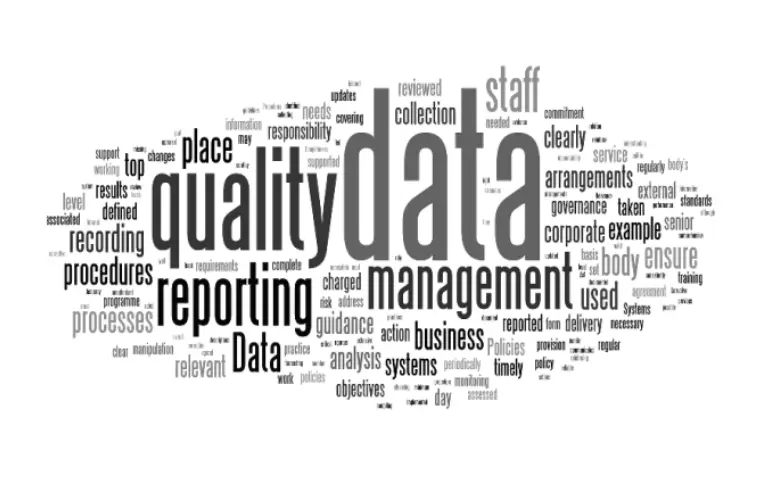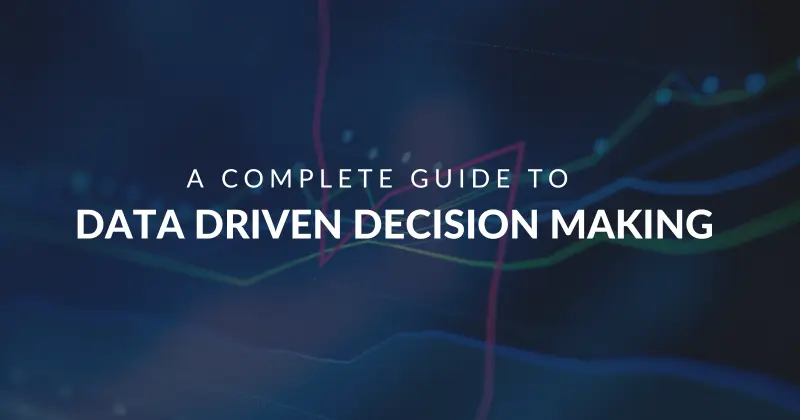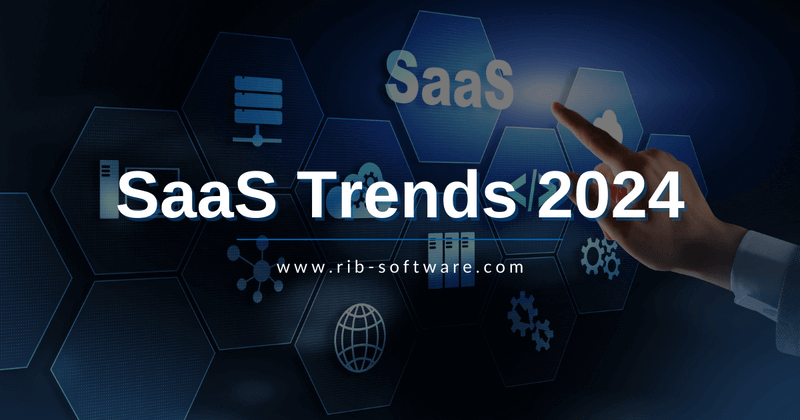17 mins read
A Complete Guide On How To Set Smart KPI Targets And Goals

In a world where data represents a significant competitive advantage for businesses, gathering and tracking data is not enough. To really ensure you are growing and making the most of your data-driven efforts, you must implement measurable goals that will allow you to assess your strategic efforts efficiently.
That said, businesses use various methods and tools to manage their data and optimize their performance. One of the most powerful ones is key performance indicators (KPIs). KPIs are a type of measurement that helps organizations evaluate their success in different activities and areas. With that in mind, implementing KPIs targets and goals proves to be a very successful practice.
In this guide, we will cover all relevant aspects related to KPI target setting. We will start with a definition, go through some benefits and tips on how to define them and finish with a list of examples generated with a modern KPI tool. Let’s hit it off with a definition!
What Are KPI Goals?
KPI goals are long-term performance measurements used by businesses to ensure a final objective is achieved. To do this, organizations set various KPI targets that are used to measure the progress of the general goal.
Businesses need KPI goals to illustrate their long-term success. To ensure this, goals must be broken down into smaller targets that serve as a benchmark for the company’s journey.
What Are KPI Targets?
KPI targets are short-term performance benchmarks used by businesses to track the progress of their strategies toward achieving general goals. KPI reports visualize these targets together to get a complete picture across departments.
In this post, we will focus mostly on the use of targets. However, it is fundamental to mention goals as the basis. A KPI goal is the strategic objective your company is trying to achieve, for example, to double revenue in the next 5 years. Targets are the specific more operational measures that will help you understand if you are achieving those objectives, for example, a 20% increase in customer acquisition, a 10% increase in the average transaction size, etc. In short, these two progress measurements work together as part of a whole business strategy.
Benefits Of Setting KPI Targets & Goals
As mentioned, strategic KPI tracking is fundamental for any business that wants to succeed through data. For that purpose, benchmarking KPI goals and targets is the way to go, and it comes with a wealth of business-boosting benefits. Let’s take a look at them now.
- Consistency: KPI smart goals help you understand if you are on the right track regarding various activities and strategies. For instance, you might see an increase in income, but how can you be sure that this increase is enough to meet your objectives in the long run? By setting clear and attainable KPI smart goals, you make sure you are working towards a clear objective.
- Efficiency: KPIs increase your business’s efficiency by helping you address any issue hindering your performance. In addition to holding you accountable to your aims and goals, working with the right performance metrics will help eliminate inefficiencies while boosting your productivity.
- Employee performance: Working with the right metrics and knowing how to set them will increase individual employee performance and interdepartmental collaboration. Armed with the right visual tools and performance indicators, everyone within the company will have access to insights that will lead to higher levels of innovation, as well as consistently informed decision-making.
- Strategic planning: In addition to benchmarking performance, working with the right KPI goals will also open up your business to a cohesive mix of historical, predictive, and real-time data. As a result, you can identify patterns or trends that will empower you to create targeted strategies for greater growth and development. Working with marketing visualizations, for instance, you can identify the kind of content that drives the most consistent engagement and create a multi-channel campaign using these insights for inspiration.
- Competitive edge: Armed with the right performance insights, you will create a culture of continual growth and evolution. In turn, you will accelerate your commercial growth, boost your profitability, and gain an all-important edge over the competition.
How To Set KPI Targets?

Now that you know the value of outlining KPI targets, you might wonder how I implement the correct ones. One of the greatest mistakes companies make when dealing with key performance indicators is thinking they work on their own. On the contrary, data doesn’t speak for itself, and you need to give a sense and context to the available information.
We already mentioned that goals and targets are not the same things. The first one works for a bigger outcome, such as increasing income, while the second one represents the means to achieve that general goal, such as a marketing campaign for a specific product that can bring more income in the long run. Now, once you’ve defined your general objectives, it is time to define your KPI targets. To help you with this task, here we list a few critical steps for setting them.
1. Use KPI standards
The first step, arguably the most important, is to start defining the key performance indicators you will track. As we mention in our guide on KPIs vs metrics, not everything that can be measured needs to be measured. Therefore, there are some steps you need to follow to avoid distracting your analysis with too many KPIs. For this purpose, two techniques are widely used in the selection process. Let’s see them in more detail.
S.M.A.R.T: This acronym stands for Specific, Measurable, Attainable, Relevant, and Time-Bound, and it works as a checklist for businesses to pick the right KPIs. In short, based on the SMART criteria, your key performance indicators should be specific to your goals, easily measurable, realistically achievable, relevant to your current business context, and timely.
6 A’s: Following the same line as the SMART criteria, the 6 A’s method also works as a checklist to pick the right indicators. According to these criteria, your KPIs should be aligned, attainable, acute, accurate, actionable, and alive. In other words, you should choose indicators aligned with your goals, realistic to your current situation, easy to understand and measure, and flexible to change.
2. Assess your current performance
Now that you’ve selected your main indicators based on two popular KPI standards, it is time to start building the basis for your targets. As a general rule, the process of setting them should be based on your own business performance. You can’t expect a 20% increase in revenue without looking at how attainable this is for your business. For this purpose, you can support yourself with professional online data analysis tools to deeply explore and analyze your performance data. This way, you will be able to paint a clear picture and generate realistic and attainable targets. Setting them based on what we want to happen instead of reality is a motivational killer. While it seems tempting to say, “We will double our sales by next month,” it might be frustrating to work hard and realize this is an unrealistic expectation.
3. Take a look at competitors
While internal performance is the basis for setting accurate and achievable targets, it is also helpful to consider some industry benchmarks. This is done by looking at competitors and comparing them to your organization’s performance in different areas. By doing this exercise, you can identify strong and weak points in your strategies and complement this information to set your goals. Additionally, you can look into future trends with the help of a market research analytics tool and find deeper insights regarding benchmarks in your industry.
Another helpful practice regarding benchmarks is to go even further than your competitors. For example, if you own a construction business and want to improve your logistics processes, you can look into what successful companies in the logistics industry are doing and generate attainable goals for yourself.
4. Define short and long-term objectives
By this point, you’ve selected the KPIs you want to measure, assessed your performance, and compared it to competitors. Now, it is time to start making some decisions. As mentioned, KPI goals are longer-term objectives, and targets are the means to getting there. For instance, an objective might have a 5-year duration, meaning you need various more minor aims to measure the progress toward that goal. For this purpose, you need to think of short and long-term aims.
Imagine you want to double your profit in 5 years. This means that if you currently make 10 million in revenue (100%), you should be making 20 million (200%) by year 5. Now, tracking this goal for five years might be confusing. Therefore, it is recommended to break it down into smaller aims—for example, yearly growth. Here, you need to assess your performance to understand how these smaller aims need to be defined. For this, you have two options that make sense:
- Firstly, you could divide the goal into equal parts: a 15% growth each year. However, this could be ambitious and unrealistic from the start as it would leave no room for error. This leads us to our second option.
- Instead, you could set progressive growth goals that are more realistic and attainable. For instance, you can start by setting a 5% growth in the first year and progressively increase it until you reach the end 5-year goal of doubling revenue.
The image below breaks down both options:

Whichever method you choose, and based on the characteristics of your business (industry, customers, etc.), you should define smaller goals that involve various departments and areas. Here, you need to think from a consumer perspective and an internal one for employees and other relevant stakeholders. For instance, you can set progressive acquisition objectives if part of the revenue growth strategy is expected from new customers. On the other hand, if you expect growth from existing clients, you can set a product innovation target that justifies a price rise and directly affects your repeat purchase ratios.
5. Summarize everything and double-check
By now, you should have defined a list of targets for your KPIs that will work across various areas and departments in your company. Now, this is a tedious process, and sometimes ambition can get the best out of us. To avoid this from happening and make sure you are working with attainable KPIs targets, it is important to reassess everything before getting to work. You can ask yourself the important questions: do I have the money and capacity to get this strategy across? This means if you have enough budget and human resources to develop, you don’t want to overwork your employees or find out midway that there is not enough budget to cover the original plans. Another way to do this is to talk with your teams and take their feedback regarding the reality of these aims. Once this is out of the way, you can start acting on your strategies.
How To Implement A KPI System?
This 5-step process should help you define targets based on your current situation. Now, in order to extract the maximum potential out of your key performance indicators, it is necessary to implement a KPI system that will work across the entire organization. Here, we give you a few tips on how to create a system that will allow you to unify all your KPI data.
- Consider general business goals
As we mentioned repeatedly throughout this post, the use of goals as a basis for the entire KPI management process is fundamental. For this reason, the first step when creating a successful KPI system should be to look into your general business goals, as this will help you understand which elements should be included in your system. It is likely that your goals will involve several areas and departments. Therefore, discussing these objectives with various stakeholders will help narrow down strategies and pick the right indicators to measure.
- Implement tools to unify your KPIs
One of the greatest challenges when building one of these systems is getting everything together for analysis. Online dashboard tools make this possible by providing a centralized view of all your most relevant KPIs to make informed decisions considering the full picture.
Continuing on the line of targets, a KPI scorecard, like the one below, is the perfect tool to put together an efficient picture of progress and the latest developments regarding your most relevant indicators. For instance, if we continue with our example of doubling revenue in 5 years, you will need to monitor performance in various areas such as finances, customers, and internal processes such as HR. This dashboard provides details of these areas and compares your current performance to the target, letting you easily spot if you are meeting your expected outcomes.
The value of this KPI system is that it unifies all aims into one location, and its visual nature makes it easy to understand at a glance. The likelihood of reaching a target is depicted in various colors so that you can easily see the status of the different initiatives.

- Examine industry standards and benchmarks
Another key means of implementing an effective KPI system is exploring industry standards and benchmarks. Conducting data-driven research in your niche or industry will help you refine your smart KPI goals and ensure that your aims or benchmarks are realistic and progressive.
Carrying out competitor research is a good way of understanding what standards or targets other brands within your sector are working towards when it comes to activities related to sales, fulfillment, inventory management, logistics, and more.
Online research will also give you a clear indication of industry-wide benchmarks related to various processes. If one of your primary aims, for example, is to improve your inventory management, you can examine standard industry benchmarks to ensure your aims are realistic. Naturally, you will base your benchmarks on your current performance—but cross-checking everything against industry standards is always good practice.
- Work with visualizations that offer consistent value
Another important consideration when working with KPI goals and objectives is to ensure every visualization within your system offers consistent performance-boosting value.
With a unified view of your KPI target visualizations, you will be able to drill down deeper into each metric to ensure it represents your data in a way that offers a clear-cut objective insight into your processes and progress. If there are any charts or visuals that you find misleading or redundant (offering very little in the way of performance-boosting insight), you can omit them from the system or replace them with something more suitable.
During this phase of the process, you should ask relevant business stakeholders to test each KPI and offer objective feedback on their value. Doing so will ensure that everyone in the business benefits from your newfound visual benchmarking and tracking initiatives.
- Ensure accessibility and collaboration
Collaboration is key when it comes to dealing with relevant KPI data. Your business goals involve various departments that need to stay connected to build cohesive strategies based on the general company vision. Traditional means of communication, such as static Excel sheets or PowerPoint presentations, make accessibility and collaboration difficult due to their static nature.
That said, a well-thought-out system should consider collaboration as a basis. Luckily, various online reporting software has been developed to allow users to easily share their KPIs from any device with an internet connection. Some of these solutions are specialized to meet the requirements of more complex industries. For instance, construction collaboration software is designed to meet the specific needs of the construction industry. Collaboration has always been challenging for the construction sector, as teams are between the office and the building site. Luckily, these solutions offer real-time data access, meaning KPI reports are updated as soon as new information is available, keeping everyone connected and collaborating.
- Arrange your metrics for maximum context and responsivity
Generating a KPI system with the help of professional dashboards will help you paint a clear picture of your performance and operations. But, to ensure that all of your KPIs serve up information in the appropriate context and that it’s possible to derive maximum insight from a simple glance or two, arranging your visuals the right way is essential.
To ensure your KPIs paint a panoramic picture that consistently results in positive performance across the board, you should avoid visual clutter, keep your color scheme and data labeling efforts consistent, and follow dashboard design best practices.
Arranging your KPIs correctly will help you squeeze every last drop of juice from your business’s most precious data, helping you consistently meet or exceed your organizational goals.
- Assess KPI progress and readjust
Like any other analytical process, a KPIs system needs to be constantly assessed to ensure it is aligned with what is expected. To keep everything working smoothly, continually check your KPI progress and be ready to adjust when necessary. The last thing you want to do is realize you will not reach your 5-year goal in year 4.
For this purpose, it is necessary to maintain a collaborative environment, meet with team members and any other relevant stakeholders, and communicate regularly about the status of your strategy. The human factor, combined with the power of data, can help businesses reap the rewards of their efforts.
KPI Goals & Targets Examples
So far, we’ve covered the definition of KPI targets, outlined a 5-step checklist for setting attainable ones, and discussed the importance of a system for efficient monitoring and decision-making. In the last section of this post, we will see how these two measurements work in action by providing a list of examples in a business context.
1. Goal: Improve Project Efficiency
Construction projects are often complex, involving many people, processes, and tools to ensure successful completion on time and within budget. Believe it or not, many construction projects fail due to poor planning, leading to overruns. Therefore, our first goal will be to improve project efficiency.

For this goal, a professional construction report would show you how the project is progressing regarding time and budget and complement this information with additional KPIs to understand whether you are achieving the goal. Let’s look at these additional indicators below.
- Average Handle Time For Project Tasks
Building projects are divided into various phases that involve many tasks, including designing drawings, specifications, construction takeoffs, and cost estimates, just to name a few. Having efficient coordination between the different teams can help ensure all tasks are completed successfully so the project can move on. Tracking the average handling time for the various tasks can aid in planning and overall project efficiency, as delays can affect the budget and the schedule later.

It is important to note that the average handling time might vary depending on the project stage and size. The construction cost estimation process for smaller projects might take less time than for larger ones, so considering those factors when setting your targets is paramount to avoid unrealistic expectations.
b. Percentage of equipment downtime
Equipment is crucial for construction productivity because many tasks involve complex machinery, like excavations or earthmoving. Therefore, project managers account for at least some machine downtime during the planning stage. However, besides the planned downtime due to maintenance or other factors, the equipment can also fail unexpectedly, and tracking it in real-time can help mitigate the impact and ensure project efficiency.

The objective should be to keep the downtime to a minimum. To do so, it is necessary to investigate the common causes of downtime and plan strategic measures to lower them. Once that is assessed, you can set an attainable target to measure progress.
These are only two examples of the many KPIs construction companies can use to measure and optimize project success. Other examples include the rework rate, time to rectify defects, and labor downtime. Professional construction analytics software can help track all these indicators in real-time.
2. Goal: Optimize Procurement Performance & Cost Efficiency
Continuing with our examples from the construction industry, we will now look at optimizing procurement performance and cost-effectiveness. Efficient construction procurement management is fundamental to a project’s success. Any mistakes or delays in materials or services can lead to significant issues later on; therefore, optimizing the process with the help of data can represent a significant competitive advantage for the business.

- Supplier availability
Tracking the availability of suppliers is a fantastic way to ensure efficient procurement management. Construction companies that deal with multiple projects simultaneously can benefit from a database of trusted suppliers to carry out the work or source materials. To ensure efficiency, tracking suppliers’ availability is of utmost importance as it can help you pick the ones you trust the most. For example, you might realize that you need more concrete than what you initially procured; the supplier availability rate can help you understand if the supplier can provide you with urgent materials if required.

To measure this KPI you can set a target or benchmark value of the minimum availability rate you expect from suppliers. That way, you can easily assess the ones that will work for you or not.
- Supplier Compliance Rate
Your relationship with trusted suppliers is governed by a set of guidelines defined in the contract. If these guidelines are not respected, the project can suffer the consequences. Therefore, tracking the supplier compliance rate can be greatly beneficial to ensure efficiency and cost-effectiveness in the procurement stage. In this case, suppliers are divided by category, and we see that equipment, materials, and prefab suppliers are under the target 60% compliance rate. This needs to be looked into to either fix the issues with existing suppliers or find better ones.

c. Purchases In Time & Budget
Construction projects rely on a tight schedule and budget that needs to be respected. While preventing delays or cost overruns is almost impossible, keeping them at a minimum is possible with efficient planning. Procurement plays a crucial role as contracts with suppliers must be signed by the time construction begins. The image below shows the purchases in time and budget; this insightful KPI shows the percentage of purchases completed within the expected time and budget. It is an invaluable indicator of procurement performance and is divided by category to extract more profound insights into it. In this case, the target is reaching 100% of purchases in time and budget as this will translate into more project efficiency.

3. Goal: Increase Overall Employee Productivity
Our next goal is based on boosting overall levels of employee productivity. Keeping your talent happy, engaged, and motivated is vital to maintaining the growth and stability of your organization.
Employee productivity, or Overall Labor Effectiveness (OLE), is usually calculated by dividing total sales by the number of employees. However, a fuller picture also considers the hours your employees are actively working and the amount of quality products they produce during that time. Our OLE visualization represents this with clarity:

By setting accurate benchmarks and working with the correct visual data, you can provide the appropriate level of support, training, or recognition, which reduces staff turnover while boosting productivity, a winning combination for any modern business. Let’s take a look at examples of KPIs that assist in improving employee productivity.
a. Absenteeism Rate
Your employees’ absenteeism rates will directly impact your business’s overall productivity. Tracking this most effective KPI over time will help you identify potential issues affecting your employees’ work attendance rates.

Expressed as an overall percentage and a column chart showing absenteeism trends over five years, here you can track overall rates of engagement and motivation and take targeted measures to boost attendance across departments. Using this metric, you can develop the proper support and engagement initiatives, increasing overall productivity levels as a result. In this example, we can see that the business is doing a good job at managing absenteeism as the rate is lower than the target.
b. Talent Satisfaction
In addition to monitoring overall absenteeism trends and percentages, tracking your talent satisfaction levels is paramount to ensuring everyone in the business is switched on and working to their maximum potential.

Presented as a talent-based net promoter score (NPS), this effective KPI template example will give you an objective overview of your employees’ overall engagement, motivation, and contentment rates. Several factors can impact talent satisfaction rates, including pay, personal development, and work-life balance. Working with this crucial metric will help you keep your best talent engaged and motivated by getting to the heart of any issues and creating a balanced culture that ultimately drives employee retention.
c. Employee Turnover Rate
A key performance indicator for boosting engagement and productivity is the employee turnover rate, which will tell you exactly how long your employees remain at your organization according to age group.

Keeping a firm grip on your retention rates is vital to your ongoing success, as they are directly linked to overall productivity rates. Not only will a high turnover rate stunt an organization’s progress and slow down productivity due to constant changes within the organization, but it will also expose glaring issues in your recruitment, onboarding, and retention strategies. Working with this metric frequently will help you develop retention strategies targeted at specific age groups or demographics within your organization to drive down turnover rates, boosting productivity in the process.
4. Goal: Double Revenue
The fourth in our list of KPI goal examples concerns revenue. We already covered this example in the post, but we will go through it in more detail here.
In short, revenue is the money generated from normal business operations, such as sales of goods or services. It does not consider costs and is calculated using the following formula: Revenue = Amount of Sales x Average Price of Service / Sales Price—Sales deductions.

As we can see from the formula, various elements influence revenue growth. Some of them are the number of sales, your average prices, and any deductions from promotions. If we follow our goal of doubling revenue in 5 years, our targets should follow that same line. Below, we mention three KPIs that can influence this particular goal.
a. Average Transaction Size
As its name suggests, the average transaction size measures the amount of money a consumer spends on each transaction. Naturally, the amount of money spent directly affects the end revenue. Therefore, it is an important indicator to define as an operational target.

For instance, if you see the potential to grow the transaction size on mobile devices, then you can set an attainable target to achieve that. Conversely, you can look into what channels your clientele buys from the most and set specific actions to target those.
b. Upsell & Cross-sell Rates
In short, upselling encourages consumers to purchase a more expensive or high-end product or service than the one they are purchasing, while cross-selling tells them to buy a related or complementary item that the original one doesn’t cover. This target is an excellent measure for increasing revenue from existing customers. It is no secret that keeping your existing clientele is cheaper than acquiring new ones. Therefore, it is a fantastic opportunity to exploit your revenue with strategic actions while offering the best opportunities to your customers.

When done correctly, upsell and cross-sell techniques can significantly boost customer loyalty as you anticipate their needs and provide them with a targeted shopping experience. This is what makes it a great indicator to set as a target, given that happy clients mean more sales and revenue, especially for B2B businesses.
c. Total Orders
The total order is a key element that directly influences revenue. It basically represents the number of sales a business is achieving in a month, and it is a great target to implement for this particular goal.

While it might seem like a straightforward metric, the total order hides a lot of insights that can be discovered with the right analytics software. For example, you can understand rush periods when your clients are buying the most and target them with promotions or discounts to motivate them to buy more and increase your order volume in the process.
5. Goal: Increase Net Profit Margin
Moving on, we will now look at the goal of increasing the net profit margin. Essentially, the net profit measures how much profit is generated from your revenue after subtracting all related costs. It is calculated with the following formula: Net profit margin = [Net Income (Revenue – COGS – Expenses – Interest – Taxes)] / Revenue x 100

As you can see from the formula, net profit is highly influenced by costs. While the calculation of revenue only considers the money coming in from sales, it doesn’t consider profitability. A business can double its revenue, but with such high costs, it will ultimately earn no money.
That said, a good strategy to follow when it comes to increasing net profit is to lower costs. Let’s see this with three KPI targets examples.
a. Rate of Return
As mentioned, one of the factors that can really lower your net profit margin is costs. That said, lowering the rates of return is a successful way to lower costs without having to sacrifice the quality of your products or services.

Returns are expensive because they require extra effort and resources that were not expected. Luckily, most reasons for return are manageable and can be avoided with a little optimization. Therefore, outlining a target of lowering the rate of return is a fairly easy way to lower costs and increase your net profit. You can do this by looking into the reasons for returns and extracting conclusions to improve.
b. Spend Under Management (SUM)
The SUM is a metric that tracks the percentage of spending that is actively managed by the procurement manager. It includes strategically managed spend in established areas with suppliers, such as control systems to make sure people are respecting the negotiated prices. In this case, the KPI is tracked against a target of 80% which is already accomplished but needs to be increased more to be in “safer” territory.

As we saw in a previous example, the optimization of procurement activities is a great cost-saving strategy that enhances transparency, accountability, and communication between businesses and suppliers. By keeping the spending under management below the expected target, you make sure you are saving costs while maximizing your procurement efforts.
Key Takeaways
As we reach the end of this guide, we hope you have a clear understanding of the importance of performance monitoring with the use of KPI targets. Making important decisions based on your available data will be useless if you don’t have a thought-out strategic plan to act on your findings.
Today, business analytics tools allow companies to manage data from several sources easily and intuitively. With these solutions, there are no excuses not to extract the maximum potential out of your own information.
If you want to start setting your own KPI targets and take your construction analytics efforts to the next level, then give RIB BI+ a try. Our state-of-the-art software offers an intuitive and user-friendly interface that allows all project stakeholders to integrate data into their workflows and collaborate with it. Book a demo today and benefit from informed decision-making!

Most Recent
17 mins read
37 mins read
26 mins read
43 mins read

Ebook











